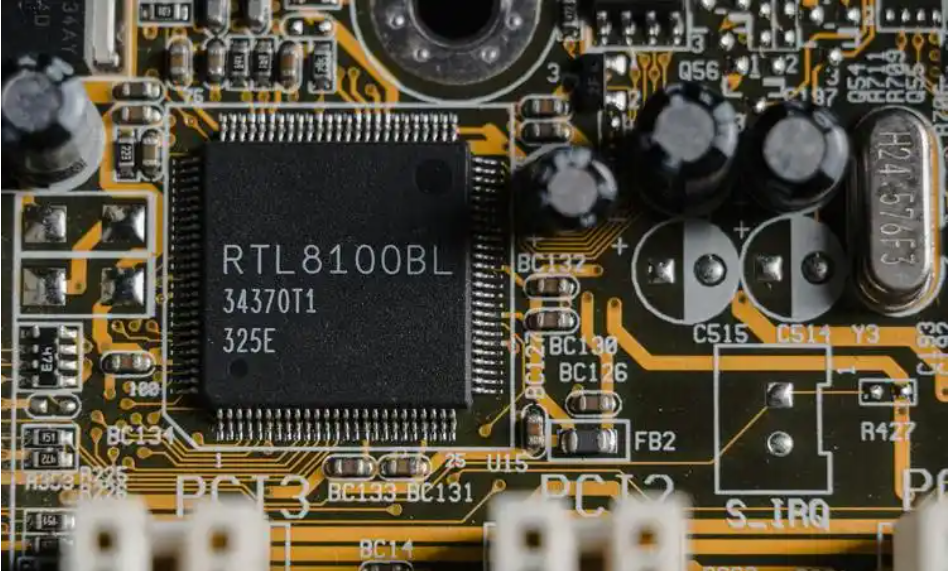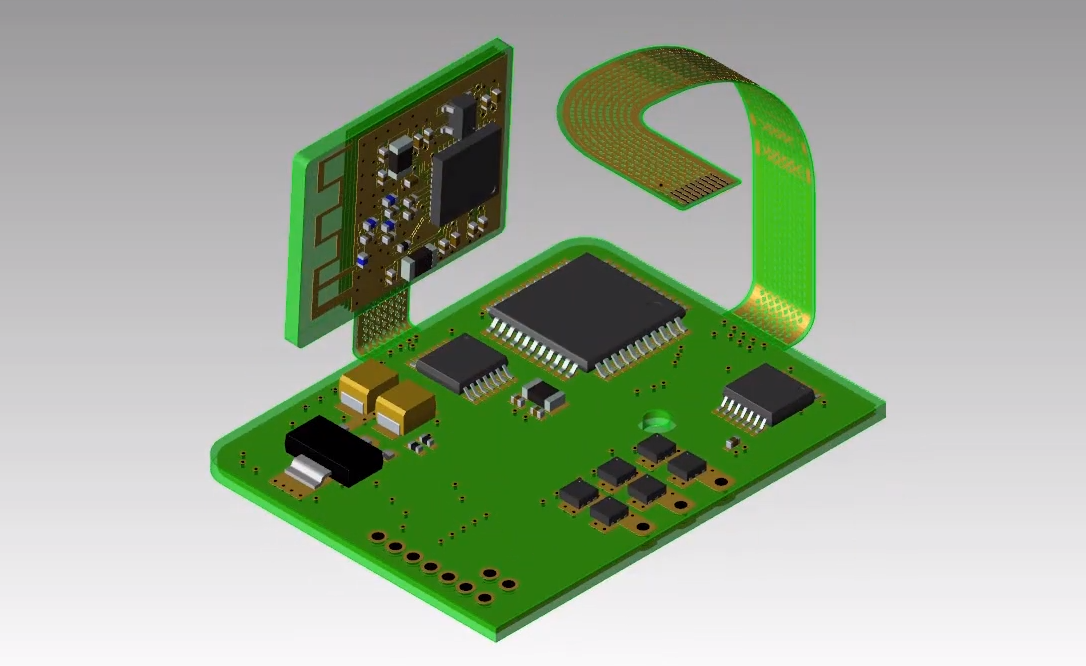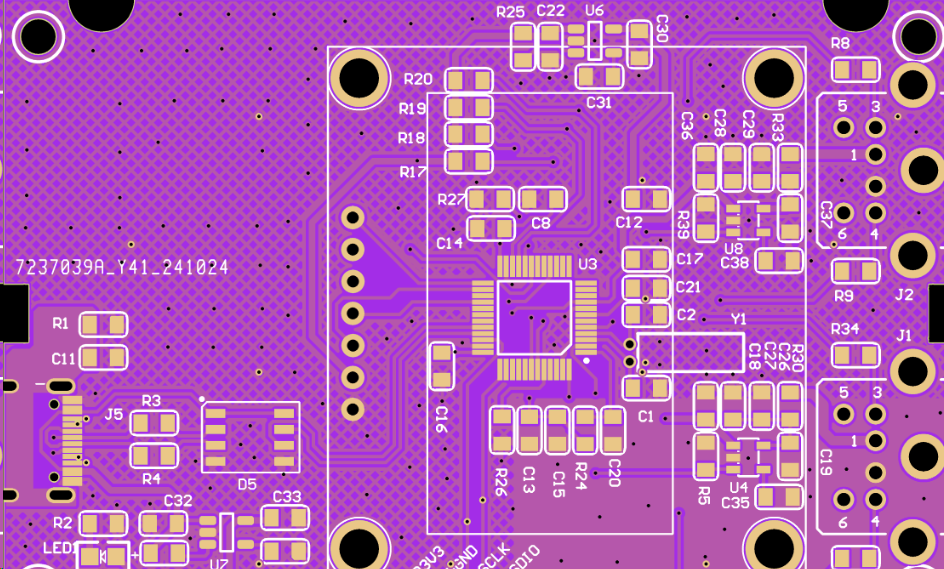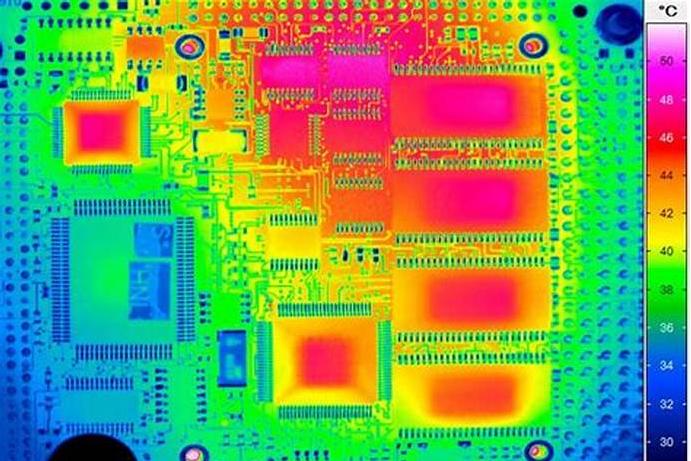In the fast-evolving world of automotive electronics, selecting the right PCB material is critical for ensuring performance and safety under extreme conditions. While FR-4 has long been a standard choice for printed circuit boards (PCBs), it often falls short in harsh environments involving high temperatures, moisture, vibration, and the need for exceptional reliability. So, what are the best materials for automotive PCB applications? Beyond FR-4, materials like polyimide, ceramic, and high-Tg laminates offer superior thermal conductivity, moisture resistance, and vibration resistance, making them ideal for automotive PCB reliability in extreme conditions.
In this comprehensive guide, we’ll dive deep into automotive PCB material selection, exploring the challenges of extreme environments and the advanced materials that can withstand them. Whether you're designing PCBs for electric vehicles (EVs), advanced driver-assistance systems (ADAS), or powertrain controls, this blog will help you make informed decisions for high-performance and long-lasting designs.
Why Material Selection Matters for Automotive PCBs
Automotive electronics operate in some of the harshest conditions imaginable. From scorching engine compartments to freezing winter roads, PCBs in vehicles must endure temperature swings, humidity, mechanical stress, and constant vibration. A poor material choice can lead to thermal degradation, electrical failures, or even safety hazards. That’s why automotive PCB material selection is not just a technical decision—it’s a cornerstone of reliability and performance.
Traditional FR-4, a glass-reinforced epoxy laminate, is cost-effective and widely used for general-purpose PCBs. However, its limitations become evident in automotive applications. FR-4 typically has a glass transition temperature (Tg) of around 130-140°C, which is insufficient for under-the-hood environments where temperatures can exceed 150°C. Additionally, FR-4 offers limited thermal conductivity (around 0.3 W/m·K) and struggles with moisture absorption, which can compromise reliability in humid conditions.
To address these challenges, engineers must look beyond FR-4 to materials specifically engineered for high-temperature PCB performance, thermal conductivity, moisture resistance, and vibration resistance. Let’s explore the key factors to consider when choosing materials for automotive PCBs.

Key Challenges in Automotive Environments
Before diving into material options, it’s important to understand the specific challenges automotive PCBs face. These extreme conditions dictate the need for specialized materials that can maintain performance and reliability.
High Temperatures
Under-the-hood components like engine control units (ECUs) often face temperatures ranging from -40°C to 150°C or higher. A high-temperature PCB material must have a high Tg (glass transition temperature) to prevent softening or delamination at elevated temperatures. Materials with low thermal conductivity can also lead to hotspots, causing component failure.
Moisture and Humidity
Vehicles are exposed to rain, snow, and humidity, especially in regions with harsh climates. Moisture resistance in PCBs is essential to prevent corrosion, electrical shorts, and degradation of dielectric properties. Materials with high moisture absorption rates can swell or crack over time, reducing automotive PCB reliability.
Vibration and Mechanical Stress
Constant vibration from road conditions and engine operation puts mechanical stress on PCBs. A vibration-resistant PCB material must be durable and flexible enough to withstand these forces without cracking or losing connectivity. Rigid materials with poor mechanical properties often fail in such environments.
Thermal Conductivity Needs
Modern automotive systems, especially in electric vehicles, handle high power loads, generating significant heat. A thermal conductivity PCB material is crucial for dissipating heat effectively, preventing thermal stress, and ensuring the longevity of components. Poor heat dissipation can lead to reduced performance or catastrophic failure.
With these challenges in mind, let’s examine advanced materials that outperform FR-4 in automotive applications.
Advanced Materials for Automotive PCBs in Extreme Conditions
When standard materials like FR-4 can’t meet the demands of automotive environments, engineers turn to specialized substrates. Below are some of the top choices for high-temperature PCB designs, thermal conductivity, moisture resistance, and vibration resistance.
1. High-Tg FR-4 Variants
For applications where cost is a concern but slightly better performance than standard FR-4 is needed, high-Tg FR-4 variants are a good starting point. These materials have a Tg ranging from 150°C to 180°C, offering improved thermal stability for moderate high-temperature environments. However, their thermal conductivity remains low (around 0.3-0.4 W/m·K), and moisture resistance is still limited, with absorption rates of about 0.1-0.2%.
Use Case: High-Tg FR-4 is suitable for interior automotive electronics, such as infotainment systems, where temperature extremes are less severe.
2. Polyimide-Based Materials
Polyimide is a high-performance material widely used for high-temperature PCB applications. With a Tg exceeding 250°C, polyimide can handle extreme heat without deforming or losing electrical properties. It also offers excellent moisture resistance (absorption rate of less than 0.2%) and flexibility, making it a vibration-resistant PCB choice for harsh mechanical conditions.
However, polyimide has lower thermal conductivity (approximately 0.2-0.5 W/m·K) compared to other advanced materials, so it may require additional thermal management solutions like heat sinks in high-power applications.
Use Case: Polyimide is ideal for flexible PCBs in tight spaces or areas with significant vibration, such as sensor modules near the engine.

3. Ceramic Substrates
Ceramic materials, such as alumina (Al2O3) and aluminum nitride (AlN), are top choices for thermal conductivity PCB designs. Alumina offers a thermal conductivity of about 20-30 W/m·K, while aluminum nitride can reach up to 170 W/m·K, far surpassing FR-4 and polyimide. Ceramics also have exceptional high-temperature resistance, with operating ranges up to 1000°C, and low moisture absorption rates (close to 0%).
The downside is that ceramics are brittle and less vibration-resistant compared to flexible materials like polyimide. They are also more expensive and harder to manufacture, which can impact project budgets.
Use Case: Ceramic substrates are perfect for high-power applications like EV battery management systems (BMS) where heat dissipation is critical.
4. Metal-Core PCBs (MCPCBs)
Metal-core PCBs, often made with an aluminum or copper base, excel in thermal conductivity, with values ranging from 1-10 W/m·K for aluminum-based MCPCBs. These materials are designed to manage heat in high-power circuits, making them a popular choice for automotive lighting and power electronics. They also offer moderate vibration resistance due to their rigid structure.
However, MCPCBs are heavier than other options and may not perform well in extremely high-temperature environments (Tg typically below 150°C). Moisture resistance can also be a concern if not properly sealed.
Use Case: MCPCBs are commonly used in LED headlight systems and powertrain controls where heat dissipation is a priority.
5. PTFE (Teflon) Laminates
Polytetrafluoroethylene (PTFE) laminates are known for their excellent dielectric properties and moisture resistance (absorption rate near 0%). They can operate in temperatures up to 260°C and are highly resistant to chemicals and corrosion, making them suitable for harsh automotive environments. However, PTFE has low thermal conductivity (around 0.25 W/m·K) and is less vibration-resistant due to its softer nature.
Use Case: PTFE is often used in high-frequency automotive applications like radar systems for ADAS, where signal integrity is critical.

Key Criteria for Automotive PCB Material Selection
Choosing the right material involves balancing performance, cost, and application requirements. Here are the main criteria to consider for automotive PCB reliability in extreme conditions:
- Thermal Performance: Look for materials with a high Tg (above 150°C for most automotive applications) and good thermal conductivity (above 1 W/m·K for high-power systems). Ceramic and MCPCBs often lead in this area.
- Moisture Resistance: Opt for materials with low moisture absorption (below 0.2%) to prevent swelling or electrical issues. Polyimide, ceramics, and PTFE are strong contenders.
- Vibration Resistance: Flexible materials like polyimide are best for vibration-heavy environments, while rigid materials like ceramics may need additional mounting support.
- Cost and Manufacturability: High-performance materials like ceramics and PTFE are more expensive and complex to process compared to high-Tg FR-4 or MCPCBs. Balance performance needs with budget constraints.
- Electrical Properties: For high-frequency applications (e.g., radar, communication systems), prioritize materials with low dielectric loss, such as PTFE.
By aligning material properties with the specific demands of your automotive application, you can ensure long-term reliability and performance.
Industry Standards and Testing for Automotive PCBs
Automotive PCBs must meet strict industry standards to guarantee safety and reliability. Some key standards include:
- ISO 26262: Focuses on functional safety for automotive electronics, ensuring that PCBs can operate without posing risks in critical systems like braking or steering.
- AEC-Q100: Defines stress test qualifications for integrated circuits, including temperature cycling, humidity exposure, and vibration testing.
- IPC-6012: Specifies performance requirements for rigid PCBs, including thermal and mechanical durability.
Materials should be tested for thermal shock (e.g., cycling between -40°C and 150°C), moisture exposure (e.g., 85% humidity at 85°C for 1000 hours), and vibration (e.g., 5-2000 Hz frequency sweeps). Selecting materials that pass these tests is essential for automotive PCB reliability.

Practical Tips for Designing with Advanced Materials
Beyond selecting the right material, design considerations play a big role in maximizing performance. Here are some actionable tips:
- Incorporate Thermal Vias: For materials with lower thermal conductivity, add thermal vias to improve heat dissipation. Space vias at intervals of 0.3-0.5 mm for optimal results in high-power circuits.
- Use Conformal Coatings: Enhance moisture resistance by applying conformal coatings, especially for materials like MCPCBs that are more vulnerable to humidity.
- Optimize Layer Stack-Up: Design multi-layer PCBs with ground planes to reduce electromagnetic interference (EMI), particularly for high-frequency applications using PTFE.
- Reinforce Mounting Points: For vibration-resistant PCB designs, reinforce mounting points with additional solder or brackets to prevent mechanical failure.
Conclusion: Making the Right Choice for Automotive PCB Reliability
Selecting the right material for automotive PCBs in extreme conditions goes far beyond sticking with FR-4. By understanding the unique challenges of high temperatures, moisture, vibration, and thermal conductivity needs, engineers can choose advanced materials like polyimide, ceramics, MCPCBs, and PTFE to ensure automotive PCB reliability. Each material offers distinct advantages, whether it’s polyimide for flexibility and vibration resistance or ceramics for unparalleled thermal conductivity.
At ALLPCB, we’re committed to helping you navigate the complexities of automotive PCB material selection. By partnering with experts and leveraging cutting-edge manufacturing processes, you can bring reliable, high-performance designs to life. Whether you’re working on electric vehicle systems or advanced safety features, the right material is the foundation of success in extreme conditions.
 ALLPCB
ALLPCB







